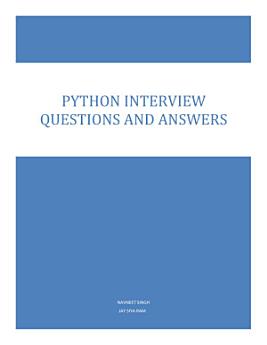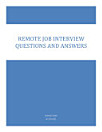Python Interview Questions and Answers - English
eBook 정보
What is Python? Python is a high-level, interpreted programming language known for its simplicity and readability. It supports multiple programming paradigms, including procedural, object-oriented, and functional programming.
What are the key features of Python? Key features of Python include:
Simple and easy-to-read syntax
Dynamic typing and automatic memory management
Extensive standard library
Support for multiple programming paradigms.
High-level data structures
Portable and extensible
What is PEP 8? PEP 8 is the Python Enhancement Proposal that provides guidelines for writing Python code to improve its readability and maintainability. It covers topics such as naming conventions, code layout, and programming practices.
What are the differences between Python 2 and Python 3? Python 3 is the successor of Python 2 and includes several improvements and backwards-incompatible changes. Some key differences include:
Print statement: In Python 2, it's a statement (print "Hello"), while in Python 3, it's a function (print("Hello")).
Unicode support: Python 3 handles strings as Unicode by default, whereas Python 2 treats them as ASCII by default.
Division operator: In Python 2, division of integers results in an integer, while in Python 3, it results in a float.
xrange: Python 2 has xrange() for creating iterators, while Python 3 uses range() to achieve the same.
What is a virtual environment in Python? A virtual environment is a self-contained directory that contains a Python installation for a particular version of Python, plus several additional packages. It allows you to work on a specific project without affecting the system-wide Python installation or other projects.
Explain the difference between list and tuple in Python.
Lists are mutable, meaning their elements can be modified after creation. Tuples, on the other hand, are immutable.
Lists are created using square brackets ([]), while tuples are created using parentheses (()).
Lists have more built-in methods for manipulation, while tuples have fewer methods due to their immutability.
What is the difference between '==' and 'is' in Python?
'==' checks for equality of values, meaning it compares whether the values of two objects are the same.
'is' checks for identity, meaning it compares whether two objects refer to the same memory location.
What is a decorator in Python? A decorator is a design pattern in Python that allows behaviour to be added to functions or classes dynamically. Decorators are written using the @decorator_name syntax and are applied using the @ symbol followed by the decorator name above the function definition.
Explain the concept of list comprehension in Python. List comprehension is a concise way to create lists in Python. It consists of an expression followed by a for clause, then zero or more for or if clauses. It allows you to create a new list by applying an expression to each item in an alterable.
What is the difference between 'append()' and 'extend()' methods in Python lists?
The append() method adds its argument as a single element to the end of a list.
The extend() method takes an alterable (such as a list) and adds each element of the alterable to the list.
These questions cover a range of topics commonly discussed in Python interviews, from basic syntax to more advanced concepts.








